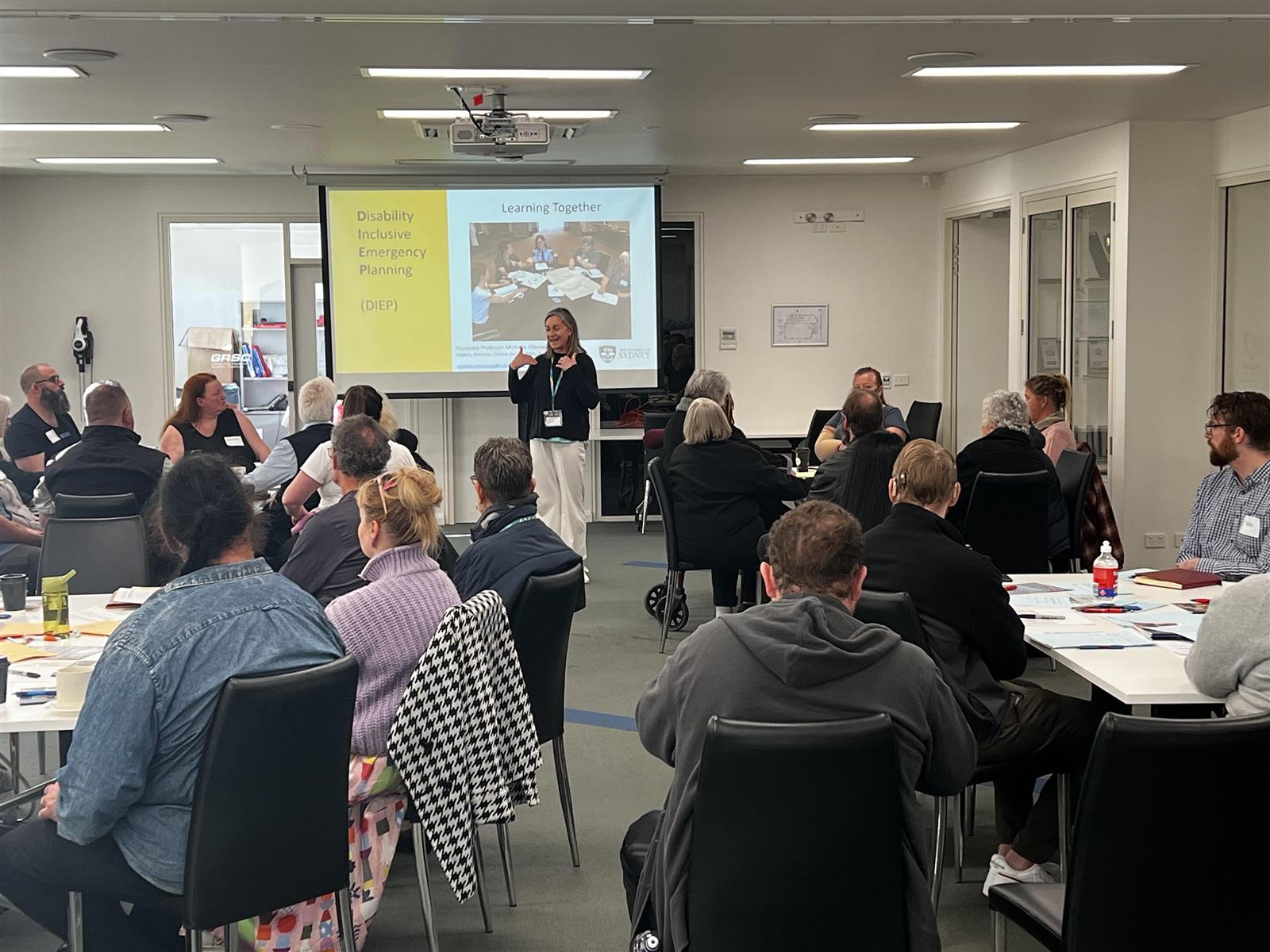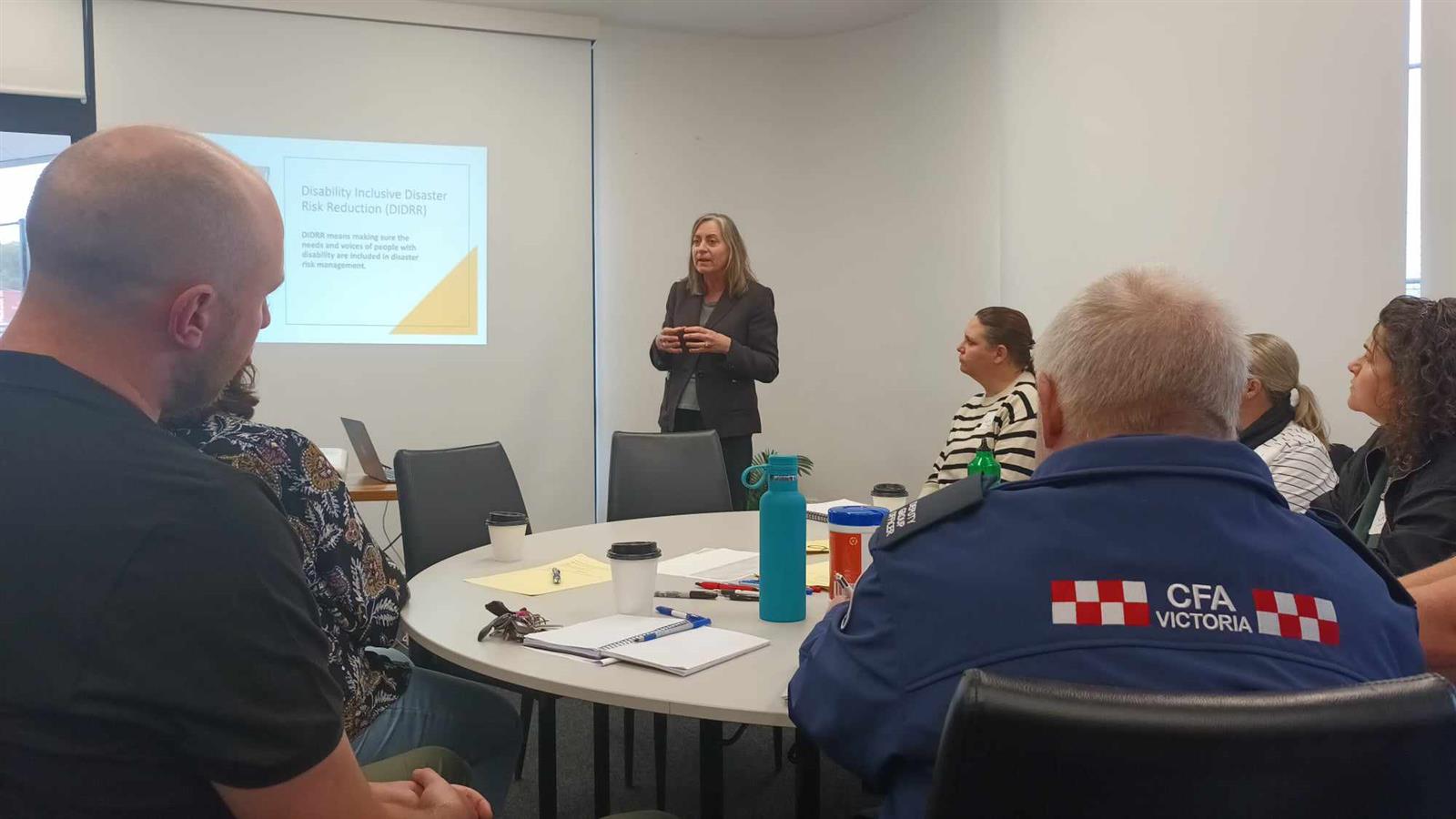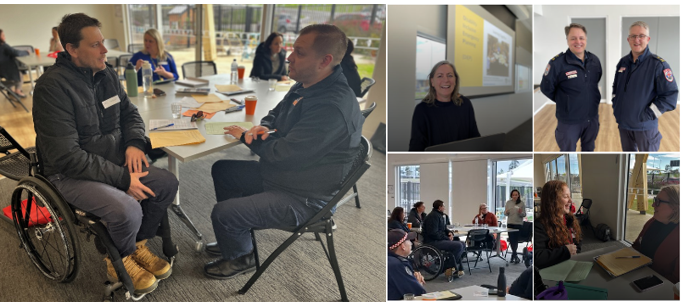 Wellington Shire disability inclusive emergency planning workshop
Wellington Shire disability inclusive emergency planning workshop
We are now halfway through a significant project in Victoria that focuses on improving fire and emergency planning for people who have a disability. Momentum is building, change is happening.
Research shows that people with a disability are two to four times more likely to die in a disaster than the general population.
In addition, national house fire fatality research from 2003 to 2017 found that 62 per cent of fatalities were people with a disability. These statistics have provided a clear direction for this project. Addressing the gaps that people with a disability experience to improve their fire and emergency preparedness are truly worth investing in, because nobody should be left behind.
CFA is leading the EMV grant funded project alongside Australian Red Cross, DARU (Disability Advocacy and Resource Unit), VCOSS (Victorian Council of Social Services), local councils and the University of Sydney.
The 'Clearing the path to disability inclusive fire and emergency planning' project aims to address two distinct but interrelated gaps:
- People with a disability have traditionally not been well included in community-level fire and disaster preparedness.
- People with a disability have had limited access to emergency planning programs and resources that help tailor their plan to their support needs and situation.
The project has two key elements. The first brings together local communities to build awareness and drive actions. This includes engaging those at higher risk in the communities so they can be better supported in emergency planning. The second element delivers targeted programs that enable people at higher risk to develop workable emergency plans tailored to their specific needs and situations.
We know that improving fire and emergency planning with people at higher risk takes a coordinated approach. As a result, the delivery is centred within local government areas (LGAs) alongside CFA, Red Cross and other local partners.
As part of the grant funding this includes City of Greater Bendigo, Mount Alexander Shire, Mitchell Shire, Casey Council, Wellington Shire and Surf Coast and Colac Otway (as a shared location). Frankston Council and Yarra Ranges Council were part of the initial pilot prior to this project and will continue to be supported.
Now we are starting to see the results of the project. Six Disability Inclusive Emergency Planning (DIEP) workshops at the local government level were delivered between May and July 2023. These workshops brought together more than 150 people from emergency services, disability advocacy and support organisations, local council, individuals with lived experience, and carers to work on how to improve local planning.
“Now I have heard this today, I can’t unthink it,” said one of the participants. Another commented, “It makes you stop and think, that this is really an area we need to focus on”. Local champions emerge, connections are formed, and change begins.
The aim is now to pair the DIEP with delivery of an emergency planning service at the household level. Local councils refer people that may need extra support to develop a fire and emergency plan. The Emergency Planning Advice Service (EPAS) is then co-delivered by CFA and Red Cross and in some locations alongside other partners such as SES.
Those who are delivering the household service are trained in a person-centred approach called Person-Centred Emergency Preparedness, co-developed by the University of Sydney with people who have a disability. Over 50 CFA, Red Cross and SES members have been trained to use this approach and deliver EPAS in the past few months.
EPAS facilitator and CFA members Greg Callaghan explained how EPAS benefits community members.
“It might be said that EPAS improves the potential outcomes for just one person at higher risk at a time. This is somewhat true - but not entirely, when outcomes for carers, support workers and families are also considered," Greg said
"The EPAS approach might be compared with community engagement activities that engage lots of people at the same time, and which may be seen as more impactful. However, this thinking needs to be reconsidered, as it's actually people at higher risk who are more likely to be injured or killed in a fire or other emergency.
"So supporting these individuals at higher risk to be safer can have a dramatic impact on reducing the toll from fire and other emergencies.”
People with a disability manage every day to overcome inaccessible environments and overcome barriers. These are strengths that people with a disability bring to emergency preparedness. Harnessing these strengths and building on them to create workable emergency plans is how the new EPAS plans to operate.
Evaluating EPAS and the impact it has on individual community members will be critical in determining the program's future.
If you are intersted in learning more please contact angela.cook@cfa.vic.gov.au.
 Bendigo DIEP Workshop June 2023
Bendigo DIEP Workshop June 2023-
 Casey DIEP Workshop July 2023
Casey DIEP Workshop July 2023
Click image to view in full
- 1
- 2